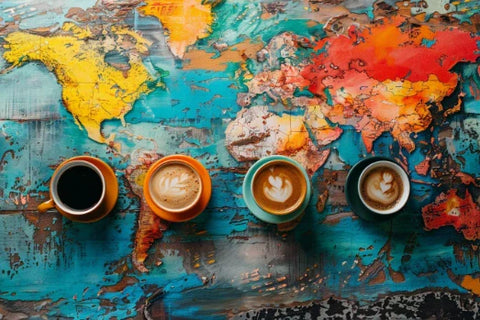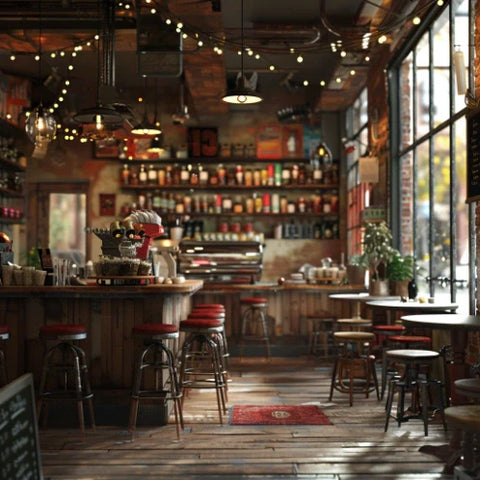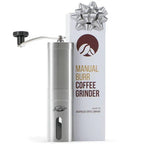Single Origin Coffee, also known as "pure flavor journeys," refers to coffee that is sourced from a single geographical location, rather than a blend of different beans from various regions. It allows coffee enthusiasts to experience the unique flavors and characteristics of a particular region, farm, or estate.
In recent years, single origin coffee has gained popularity among coffee lovers due to its distinct flavors and the growing appreciation for specialty coffee. It offers a more transparent and traceable coffee experience, allowing consumers to support small farmers and their communities.
There are different types of single origin coffee, including:
- Single Farm Coffee: This type of coffee comes from a specific farm or cooperative, allowing for a more precise and personal connection to the source.
- Single Estate Coffee: These are coffees that come from a single farm, but with a higher focus on quality control, resulting in a more consistent flavor.
- Single Origin Blend: As the name suggests, this is a blend of beans from a single region, offering a unique flavor profile that is representative of that area.
Read: Blends VS Single Origin Coffee: Which Is Right For You?
The flavor of single origin coffee is influenced by various factors, including climate and altitude, soil composition and terroir, and the processing methods used. These factors contribute to the unique flavor notes and characteristics of each coffee.
To brew the perfect cup of single origin coffee, it is essential to consider the different brewing methods, grind and measure the beans correctly, and pay attention to water temperature and ratio, as well as brewing time and technique.
There are several places where you can find the best single origin coffee, including specialty coffee shops, online retailers, and directly from roasters. It is recommended to do research and try different options to find your preferred single origin coffee. With its distinct flavors and transparent sourcing, single origin coffee offers a truly unique and enjoyable coffee experience for any coffee lover.
Key Takeaways:
What Is Single Origin Coffee?
Single origin coffee is a term used to describe coffee beans that come from a single geographic location, typically a specific country or region. This indicates that the beans are grown within a specific area, resulting in a distinct flavor profile influenced by the local climate, soil, and cultivation methods.
So when you inquire about 'what is single origin coffee?', you are essentially asking about coffee beans that originate from one identifiable place, providing an authentic taste of the unique coffee characteristics of that particular region.
Why Is Single Origin Coffee Gaining Popularity?
Single origin coffee is gaining popularity due to its unique flavors, traceability, and support for small-scale farmers.
Flavor: Coffee enthusiasts appreciate the distinct taste profiles specific to a single region's terroir and processing methods.
Traceability: Consumers value transparency in the coffee supply chain, knowing the exact origin of their beans.
Social impact: Supporting small-scale farmers and their communities aligns with ethical consumerism.
If you're keen on exploring single origin coffee, try Ethiopian Yirgacheffe for its floral notes, Colombian Huila for its fruity undertones, or Sumatra Mandheling for a full-bodied experience.
What Are the Different Types of Single Origin Coffee?

1. Single Farm Coffee
- Single farm coffee is sourced from a specific farm, resulting in a unique and distinct flavor profile.
- Farmers meticulously oversee the entire coffee production process, ensuring high quality and sustainability.
- The beans are carefully hand-picked and processed to maintain their individual characteristics.
- Single farm coffee not only provides delicious coffee, but also supports local communities and promotes transparency in the coffee supply chain.
During my trip to Costa Rica, I had the opportunity to visit a family-owned coffee farm. Witnessing their dedication to producing exceptional single farm coffee was truly inspiring. From hand-picking the ripest cherries to expertly processing the beans, every step was a labor of love that was reflected in the rich and nuanced flavors of the coffee.
2. Single Estate Coffee
Single estate coffee, like Hacienda La Esmeralda, originates from a single estate or farm, offering unique flavors specific to its location and terroir. The beans are cultivated, processed, and roasted by the same entity, ensuring quality and consistency.
To experience the pure taste of single estate coffee, explore renowned brands such as Finca El Injerto or La Minita, available through specialty coffee shops, online retailers, or directly from the roasters.
When indulging in single estate coffee, savor the distinct essence of a specific region, elevating your coffee journey to a whole new level.
3. Single Origin Blend
- Combines beans from different single origin locations to create a unique Single Origin Blend.
- Creates unique flavor profiles by blending beans from different single origin locations.
- Blending requires expertise to balance and enhance distinct characteristics of each single origin bean.
- Popular Single Origin Blends include a mix of beans from Colombia, Ethiopia, and Brazil.
What Factors Affect the Flavor of Single Origin Coffee?

1. Climate and Altitude
- Altitude: Higher altitudes often result in slower coffee bean development, leading to a denser bean with more nuanced flavors.
- Climate: Different climates and altitudes affect the rate of coffee maturation, influencing the flavor profile. For instance, cooler temperatures and higher altitudes result in a slower growth rate, leading to a more complex flavor.
Read: Brewing at the Extreme Coffee in the Worlds Harshest Climates
2. Soil and Terroir
Soil and terroir are essential elements in defining the flavor profile of single origin coffee. The mineral composition of the soil and the specific environmental conditions of the region where the coffee is grown greatly impact its taste. For example, Ethiopian coffee, grown in high altitudes with rich, red soil, delivers a unique fruity flavor. Similarly, Colombian coffee, cultivated in volcanic soil, offers a complex and rich taste with hints of nuttiness and cocoa.
For a delightful coffee experience, consider exploring single origin coffees from various terroirs and soil compositions.
3. Processing Methods
- Natural Process: Involves drying the coffee cherries in the sun, allowing the fruit to ferment and impart unique flavors.
- Washed Process: The cherries are pulped and washed, resulting in a clean, bright taste with pronounced acidity.
- Honey Process: The skin is removed, leaving some or all of the sticky mucilage intact, leading to a sweet and complex profile.
Fact: Processing methods significantly influence the flavor profile of single origin coffee, showcasing the diverse range of tastes derived from different processing techniques.
Read: Coffee Processing At The Farm: How It Impacts Your Coffee’s Flavor
How to Brew the Perfect Cup of Single Origin Coffee?
For coffee enthusiasts, exploring single origin coffee is like embarking on a flavorful journey around the world. But what separates a good cup of single origin coffee from a great one? It all comes down to the brewing process. In this section, we will guide you through the steps of brewing the perfect cup of single origin coffee. From choosing the right brewing method to mastering the brewing time and technique, we will cover all the essential elements to elevate your coffee experience.
1. Choosing the Right Brewing Method
- Consider the brewing method based on the coffee flavor profile: French press for full-bodied coffee, pour-over for a clean taste, or espresso for a concentrated flavor.
- Adapt the brewing method to the coffee bean origin: Use AeroPress for light-bodied African beans and Chemex for medium-bodied Central American beans.
- Experiment with different brewing methods to find the ideal match for your single origin coffee.
2. Grinding and Measuring the Coffee Beans
Grinding and measuring the coffee beans is crucial for brewing the perfect cup. Follow these steps:
- Grinding: To achieve a consistent grind size that matches your brewing method, use a burr grinder.
- Measuring: For accuracy, use a digital scale to measure the ratio of coffee to water.
Pro-tip: Adjust the grind size to control extraction and enhance the flavor profile of your coffee.
3. Water Temperature and Ratio
- Water Temperature: For the best extraction of flavors without scorching the coffee, use water between 195-205°F.
- Coffee-to-Water Ratio: To achieve a balanced and rich brew, aim for a ratio of 1:16 (coffee to water).
4. Brewing Time and Technique
- Determine the perfect brewing time for your single origin coffee by considering its roast level and grind size.
- Explore various brewing techniques, such as pour-over, French press, or Aeropress, to discover the ideal method for your coffee.
- Adapt your brewing time and technique to achieve your desired flavor profile, balancing acidity, body, and overall taste.
Where Can You Find the Best Single Origin Coffee?

1. Specialty Coffee Shops
- Discover local specialty coffee shops known for their carefully selected single origin coffee beans.
- Interact with experienced baristas to gain insight into the origin, flavor profiles, and recommended brewing methods for each coffee.
- Buy freshly roasted single origin coffee beans to savor at home.
Specialty coffee shops have transformed the coffee scene, providing a wide variety of single origin coffees and providing a space for coffee lovers to appreciate the distinct qualities of each coffee bean.
2. Online Retailers
- Research: Look for reputable online retailers that specialize in single origin coffee, such as Blue Bottle Coffee or Stumptown Coffee Roasters.
- Reviews: Check customer reviews and ratings to gauge the quality and customer satisfaction of the online retailers.
- Shipping and Packaging: Consider the shipping options, delivery time, and packaging methods offered by the online retailers to ensure the coffee beans remain fresh.
- Variety: Explore the range of single origin coffees available on the online platforms to find diverse flavor profiles and origins.
3. Directly from the Roasters
- Visit the roastery where the coffee is produced.
- Connect with the roasters and learn about their process.
- Purchase freshly roasted beans directly from the roasters.
Fact: Directly from the roasters, you can experience the true essence of single origin coffee, ensuring quality and authenticity.
Summary
Single origin coffee has a rich history dating back centuries, with regions like Ethiopia, Colombia, and Brazil contributing to its unique and flavorful tradition. The diverse range of flavors in single origin coffee is influenced by the climate and soil of each specific region, providing coffee enthusiasts with the opportunity to taste the distinct characteristics of different areas around the world.


